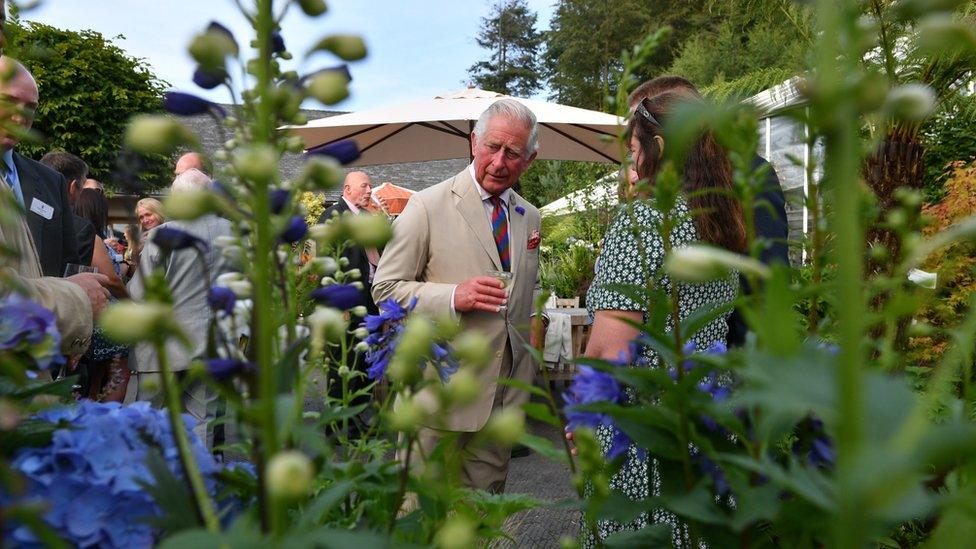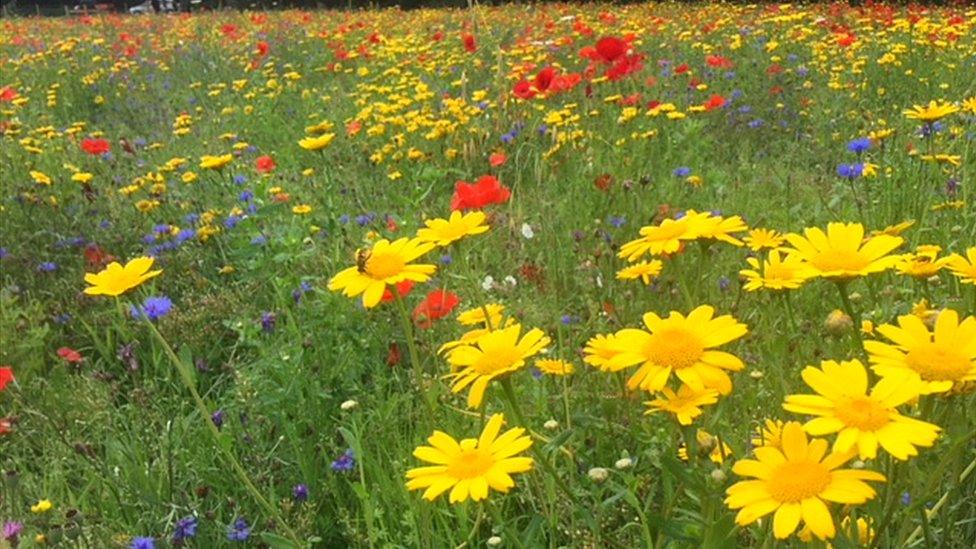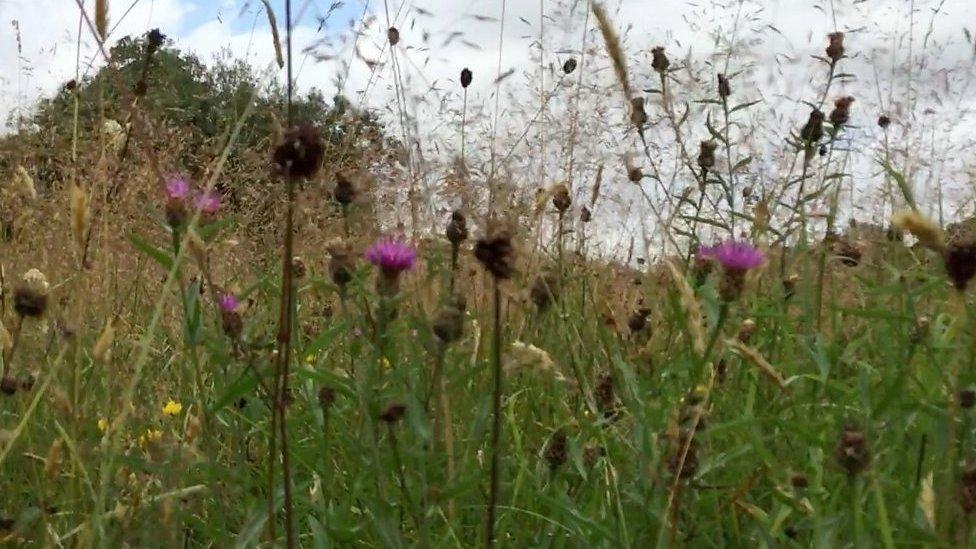Wildflowers to be planted at Stonehenge and other sites
- Published

Some 97% of the UK's meadows have disappeared since the 1930s
One hundred wildflower meadows are to be created at historic sites across England, including Stonehenge.
English Heritage said the project would leave "a natural legacy" by restoring the country's lost flower-rich grasslands, in honour of the King's coronation.
Some 97% of the UK's meadows have disappeared since the 1930s.
Seventy-five of the meadows will be brand new and 25 are existing ones which will be developed.
English Heritage's chosen locations include 43 castles and forts, 22 abbeys and priories and 10 historic houses.
Whitby Abbey in North Yorkshire, Queen Victoria's former home Osborne on the Isle of Wight and Tintagel Castle in Cornwall are among them.

Charles, who will be crowned on 6 May, is known to be a passionate gardener
At the prehistoric stone circle Stonehenge in Wiltshire, a new field of wildflowers is planned for outside the visitor centre to greet people on arrival.
The banks of the monument are already a county wildlife site, with flowers such as orchids found in the outer grassland near the stones.
Kate Mavor, English Heritage's chief executive, said: "The King's coronation is a significant moment in history and we wanted to mark it in a meaningful way, in a way that combines two of His Majesty's passions - nature and heritage.
She added: "In a decade's time, our coronation pledge will be an inspiring legacy of established, restored and new meadows at 100 of our historic sites - big and small - right across England."
Working with wildlife groups and volunteers, English Heritage will source seeds from existing meadows in the area to ensure the reintroduction of viable, local species of wildflower to each site.

Follow BBC West on Facebook, external, Twitter, external and Instagram, external. Send your story ideas to: bristol@bbc.co.uk , external
- Published5 October 2022

- Published31 July 2019
